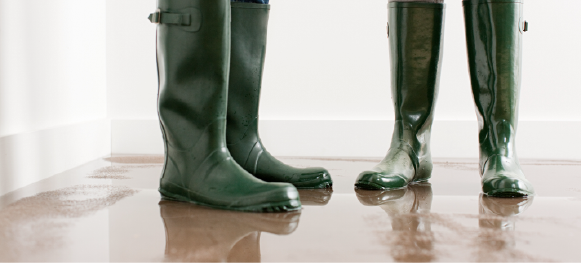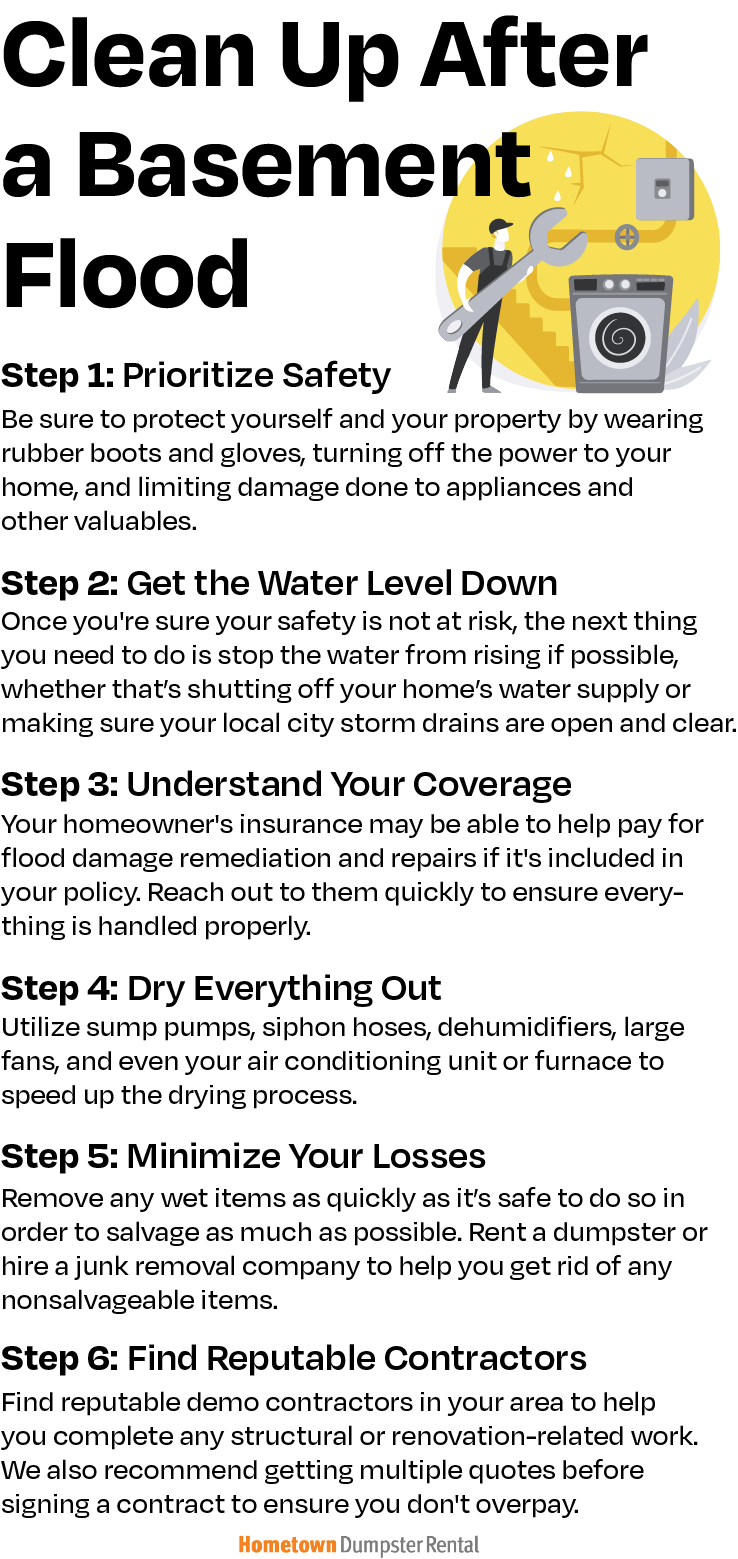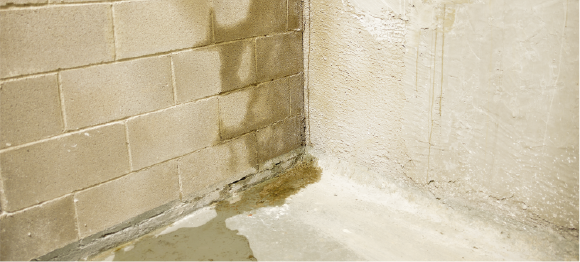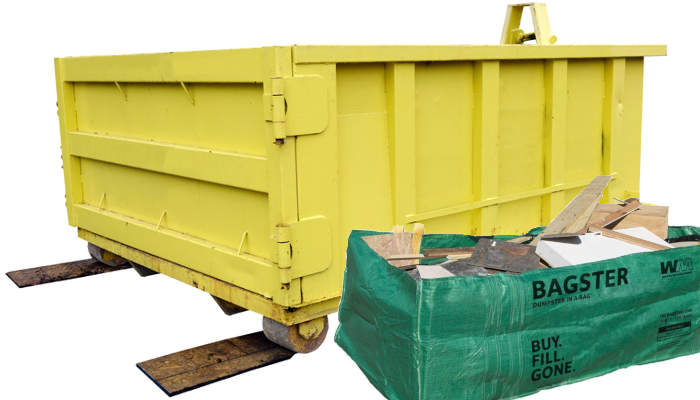
Updated February 9, 2022
A flood in your basement, whether from a burst pipe, heavy rain, sewer backup, faulty appliance, or floodwaters, is a huge pain, regardless of the severity.
Statistics show that more than 14,000 people experience a water disaster of some kind every day.
The fallout and cleanup involved with a basement flood doesn't have to be overly stressful, and Hometown is here to help.
In this guide, we'll outline the steps you should take to protect your property, and thereby yourself, by getting things dried out, cleaned up, and back to normal as soon as possible.
Jump to:
- Prioritize Safety
- Get the Water Level Down
- Understand Your Coverage
- Dry Everything Out
- Minimize Your Losses
- Find Reputable Contractors
Find junk removal services near you

Step 1: Prioritize Safety
Regardless of the cause of your basement flood, your first question will likely be, "What do I do now?"
Protect Yourself
The first step is to make sure you and any other residents are not putting yourselves at risk.
Whenever entering a flooded home or area, be sure you're wearing protective clothing, like rubber boots and gloves.
Wading through dirty water or touching items that have come into contact with flood water can expose you to pollutants, like bacteria, mold, chemicals, etc.
In cases of more extreme flooding, make sure the house is safe to enter first.
Keep an eye out for telltale signs of structural damage, like buckling floors or walls or warped or cracked foundations.
We also recommend taking photos and video of the damage and documenting cleanup efforts in case you need to submit them to your insurer.
Adequate documentation will allow the insurance adjuster to accurately assess the damage and your loss.
Immediately contact your utility companies if you suspect any damage has occurred to water, gas, electric, or sewer lines.
Safety is always more important than salvaging household items, so be wise as you assess the structural integrity of your property.
Protect Your Items
Even a small amount of water can cause an electrocution hazard in your home, so we recommend cutting the power to your home to mitigate your risk, even if there is a widespread power outage.
Locate your electrical panel and turn off the main breaker and each fuse switch.
Likewise, unplug appliances, equipment, or machinery if they are at risk and prop them up on blocks to keep them out of rising water whenever possible.
A backup generator can be a huge asset during floods because they allow for an electric sump pump, water vacuums, fans, and lights to run without putting yourself at risk of electrocution.
We also advise shutting off your gas or reaching out to your gas company to do it for you if your home uses natural gas.
If your home experiences serious flooding, a qualified electrician will need to inspect, clean, and dry the power box before you can turn the power on again.
Step 2: Get the Water Level Down
Once you're sure your safety is not at risk, the next thing you need to do is stop the water from rising if possible.
If a pipe has burst or a broken appliance is leaking, turn off the water supply to your home immediately.
If your home is flooding due to a storm or natural disaster, call your city to make sure the storm drains are open and cleaned out to ensure the water recedes as quickly as possible.
Find basement cleanout companies near me
Step 3: Understand Your Coverage

Your homeowner's insurance may be able to help pay for flood damage remediation and repairs if it's included in your policy.
Insurance companies classify water damage differently and are typically very strict about what they will and won't cover.
In many cases, water damage is preventable with adequate home maintenance.
Because of this, insurance providers only cover very specific circumstances.
The most common types of coverage include:
Flood
Flood damage is not covered in your standard homeowner's insurance policy, but a separate policy can be purchased from government-backed National Flood Insurance Program.
If you live in a Special Flood Hazard Area, you can buy a policy through a private insurer in order to meet your mortgage requirements and federal mandates.
However, surface water, like rain, rivers, lakes, or oceans overflowing, is excluded.
Water Damage from Burst Pipes
Damage from your pipes bursting is typically covered in a standard homeowner's policy.
However, if your pipes are slowly leaking over a longer period of time, this damage is excluded.
Water Backup
A home insurance policy typically includes water overflow under the water damage clause, but you will need to add water backup coverage.
Water Backup Coverage includes the backup of water from a drain, pipe, or sump pump.
Water overflow water is usually clear and relatively clean because it's never entered the plumbing system.
Water backup water is often dark brown or black and grainy because it comes from deeper within the plumbing system.
You can generally purchase water backup coverage as an add-on coverage when you first purchase your policy in increments of $5,000 of protection.
Storm-Related Water Damage
Water damage caused by a storm is likely covered by your standard homeowners policy if the water enters from above ground level.
Water Seepage
Groundwater seepage is not covered in a standard homeowner's policy.
Water seepage is when water seeps into your home via porous material or tiny holes due to groundwater levels rising or excess water in the soil causing hydrostatic pressure against your home's foundation.
Follow all the instructions laid out by your insurance company when it comes to the clean up and restoration process.
Wait to begin any repairs or demolition until your insurance company has sent an adjuster to your home to assess the damage or has given you authorization to move forward.
Keep track of all the damage by taking photos and video of the entire process, documenting conversations with your insurer, and maintaining consistent, clear communication.
Find junk removal services near me
Step 4: Dry Everything Out
Removing water as quickly as possible after your basement floods is important in order to minimize any damage to flooring, carpets, drywall, etc.
Act quickly to limit damage to your home and avoid further problems down the road.
If you have a sump pump, this is the best choice for removing large amounts of water.
Buckets or a hose to siphon the water are your next best bets.
A wet vac can suck up relatively small amount of standing water from carpets and floors.
If the flooding is minimal, mopping up the water with towels or an absorbent mop head is typically sufficient.
The longer the water is allowed to sit in your basement, the more extensive the damage is likely to become.
Once the bulk of the water is removed, open your windows (if it's dry outside) and utilize fans and dehumidifiers to move air and dry out your basement and belongings. Running the air conditioner or furnace can be helpful, too.
If you're able to dry out your basement and belongings in less than 24-48 hours, you can likely get away without removing or tossing too much.
As previously mentioned, remember to document the entire process as you go, taking photos and video of the level of flood damage.
Water damage can be sneaky and penetrate the structure of your home, causing trapped moisture pockets, which can lead to hidden mildew and mold within your walls or beneath your floors and eventually, structural damage.
We recommend using a moisture meter to ensure moisture doesn't go undetected.
If the flood damage is extensive, you'll want to contact a qualified flood restoration company to take any additional steps to ensure your home is adequately dried out, repairs are made, and the structure is safe for years to come.
If the cause of the flood is covered by your homeowner's insurance, you will need to get authorization from your insurer before beginning cleanup, so reach out to them immediately.
Step 5: Minimize Your Losses
As previously mentioned, the faster you can dry things out, the less damage you'll experience.
As soon as it's safe to do so, separate any water-logged items and air them out. (Don't forget to document!)
The quicker you can remove salvageable items, the better chance you have of saving them.
If an item has been exposed to water for more than 24-48 hours, they likely contain mold spores and should be thrown out.
Similarly, we recommend throwing out any food that has been in close proximity to flood water, not just the food that has come in contact with it.
If you have a decent amount of items to get rid of, whether it's random household items, furniture, appliances, or carpeting, a junk removal company can help haul it away quickly and safely.
Or, if you'd rather do the work yourself, renting a dumpster is another great option.
Hometown specializes in helping homeowners find junk removal services and dumpster rentals in their hometown. Browse companies in your area, read customer reviews, and request quotes from multiple providers to ensure you get the best price for great services.
Find dumpster rental or junk removal near me
Learn more:
Step 6: Find Reputable Contractors
If your basement flood was caused by a burst pipe or broken appliance, a qualified local plumber should be one of your first calls.
A plumber will be able to stop the leak, fix the pipe, and resolve any plumbing issues that contributed to the flood.
Many plumbers will also recommend restoration companies to help remove any water and restore your property, but don't allow any restoration company to begin any work before your insurance company has the chance to send an adjuster to look at the damage and assess your claim.
Find reputable demolition contractors in your area to help you complete any structural or renovation-related work. We also recommend getting multiple quotes from demolition contractors before signing a contract to ensure you don't overpay.
Find demolition contractors near me
Learn more:


